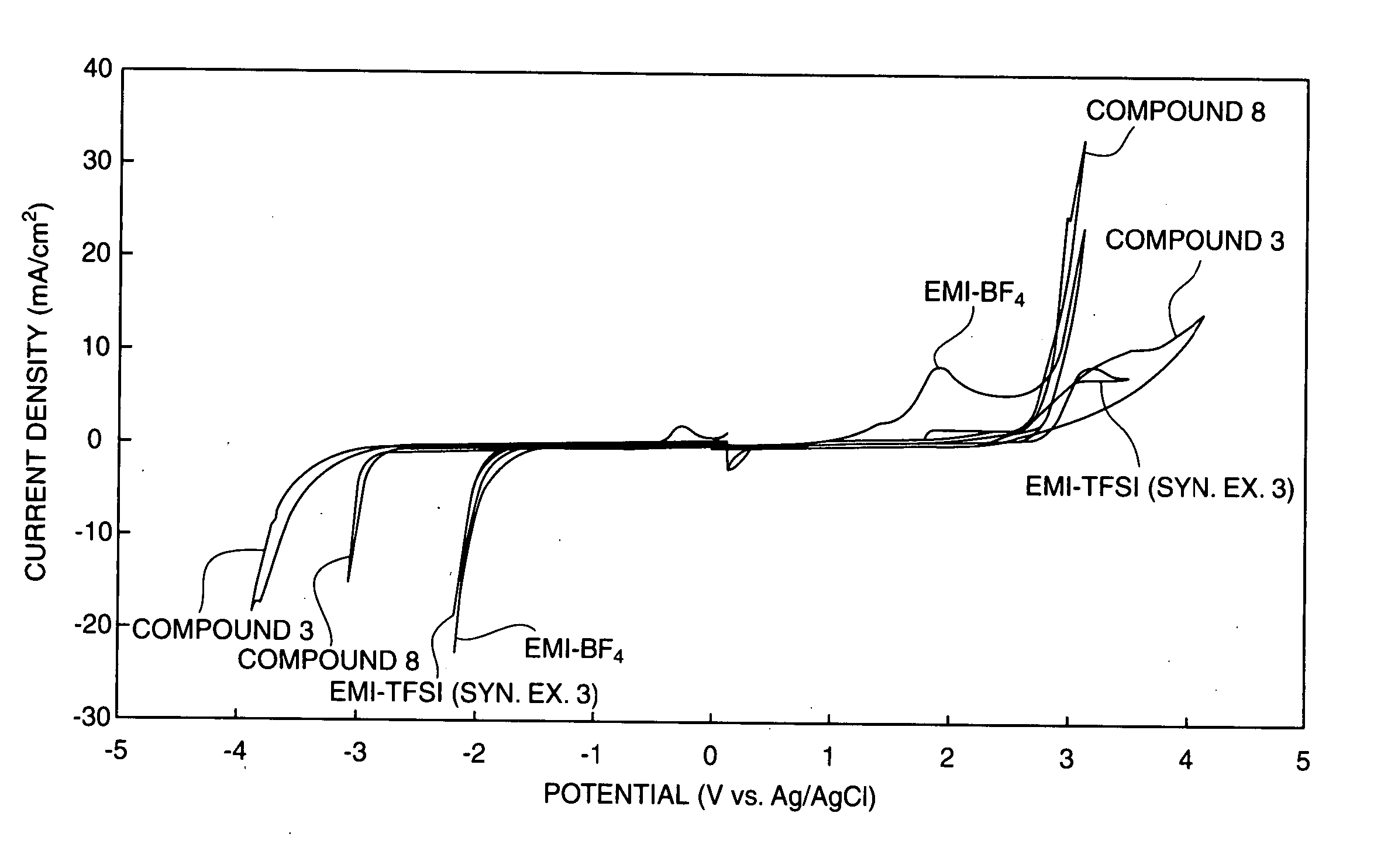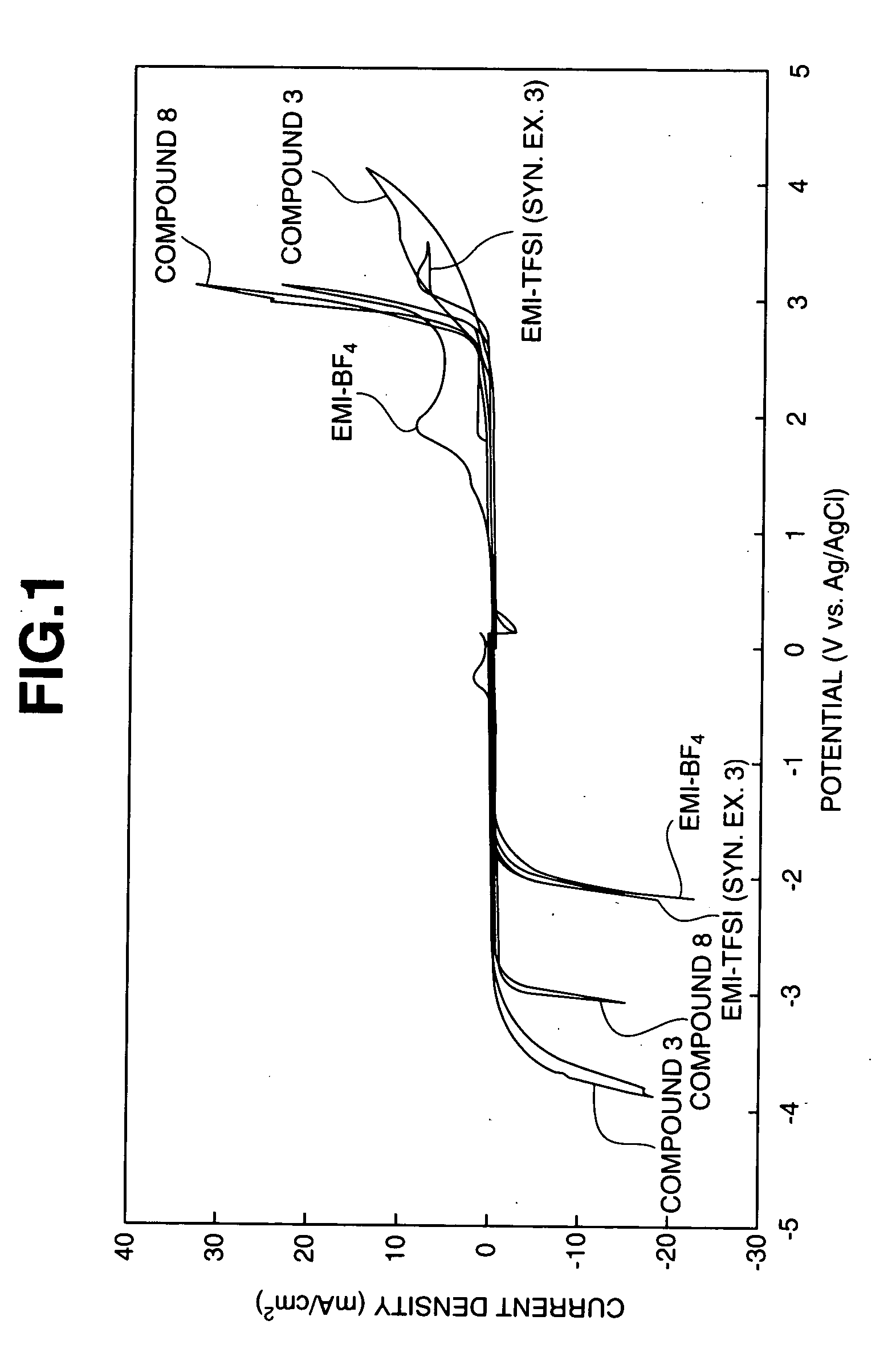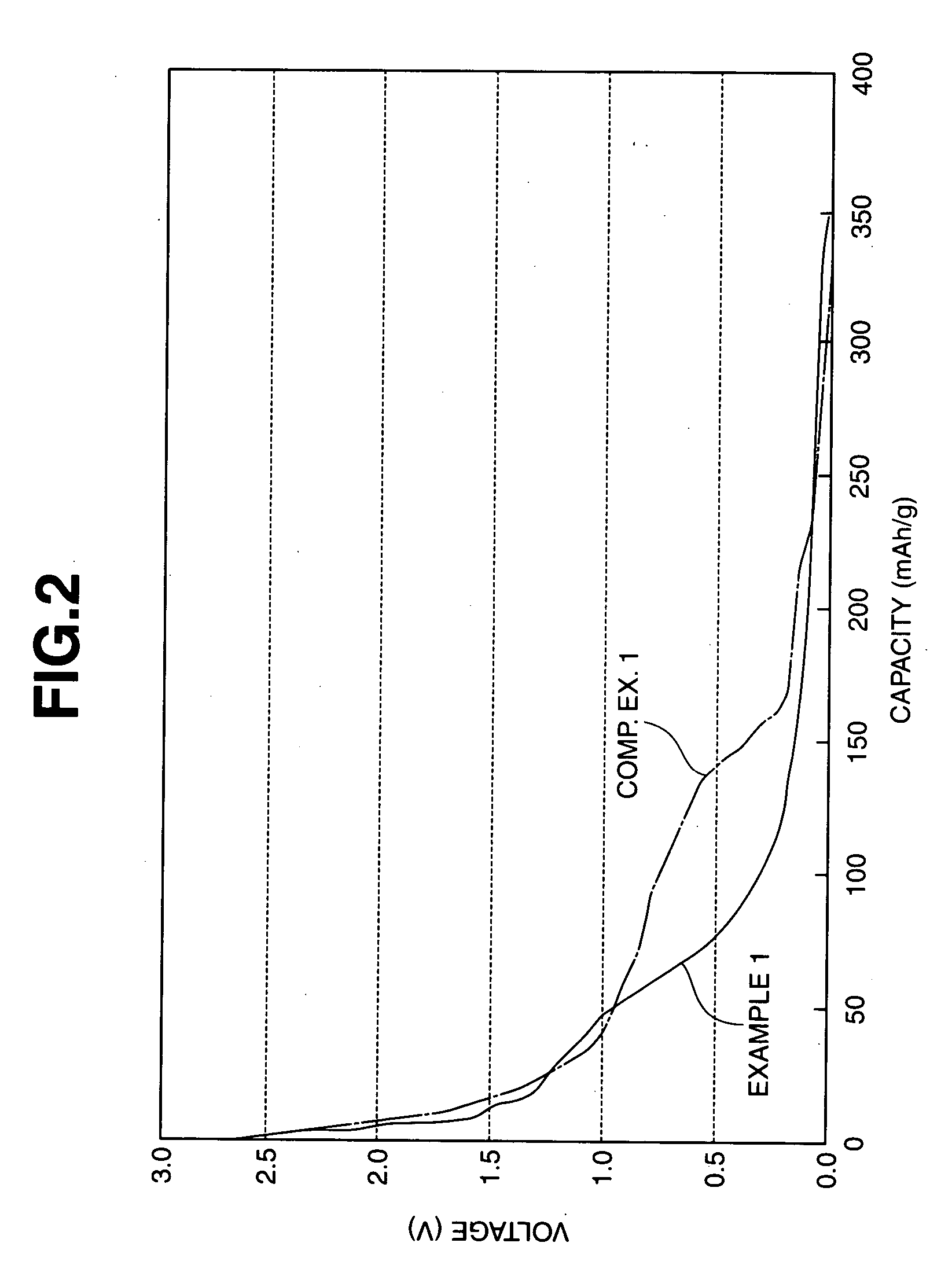Nonaqueous electrolyte and nonaqueous-electrolyte secondary battery
a secondary battery, nonaqueous electrolyte technology, applied in the direction of non-aqueous electrolyte cells, cell components, fused electrolyte fuel cells, etc., can solve the problems of lack of performance adequate for practical use, low melting point, and poor low temperature characteristics of batteries obtained using such salts. achieve excellent low-temperature characteristics, stable and cycle-retaining
- Summary
- Abstract
- Description
- Claims
- Application Information
AI Technical Summary
Benefits of technology
Problems solved by technology
Method used
Image
Examples
synthesis example 1
Synthesis of Compound (8)
[0156]
[0157] A solution prepared by mixing together 100 ml of diethylamine (Kanto Chemical Co., Inc.) and 85 ml of 2-methoxyethyl chloride (Kanto Chemical Co., Inc.) was placed in an autoclave and reacted at 100° C. for 24 hours. The internal pressure during the reaction was 0.127 MPa (1.3 kgf / cm2). This yielded a mixture of deposited crystals and reaction solution to which was added, following the 24 hours of reaction, 200 ml of an aqueous solution containing 56 g of dissolved potassium hydroxide (Katayama Chemical Industries Co., Ltd.). Each of the two divided organic phases that formed as a result was separated off with a separatory funnel and subjected twice to extraction with 100 ml of methylene chloride (Wako Pure Chemical Industries, Ltd.). The separated organic phases were then combined and washed with a saturated saline solution, following which potassium carbonate (Wako Pure Chemical Industries, Ltd.) was added to remove water and vacuum filtratio...
synthesis example 2
Synthesis of Compound (3)
[0162]
[0163] First, 8.24 g of the 2-methoxyethyldiethylamine obtained as in Synthesis Example 1 was dissolved in 10 ml of tetrahydrofuran (Wako Pure Chemical Industries, Ltd.), following which 4.0 ml of methyl iodide (Wako Pure Chemical Industries, Ltd.) was added under ice cooling. After 30 minutes, the mixture was removed from the ice bath and stirred overnight at room temperature. The solvent in the resulting reaction mixture was then driven off by vacuum distillation, and the resulting solid matter was recrystallized from an ethanol (Wako Pure Chemical Industries, Ltd.)—tetrahydrofuran system, yielding 16 g of 2-methoxyethyldiethylmethylammonium iodide.
[0164] Next, 15.0 g of the 2-methoxyethyldiethylmethyl-ammonium iodide was dissolved in 100 ml of distilled water, following which 6.37 g of silver oxide (Kanto Chemical Co. Inc.) was added and stirring was carried out for 3 hours. The reaction mixture was then vacuum filtered to remove the precipitate, ...
synthesis example 3
[0165] First, 5.74 g of lithium bis(trifluoromethane-sulfonyl)imide (produced by Kishida Chemical Co., Ltd.) was added to 30 ml of a 1:1 (by volume) mixed solvent composed of chloroform and acetonitrile, and the mixture was stirred to form a suspension. Next, a solution prepared by dissolving 2.92 g of 1-ethyl-3-methylimidazolium chloride (Tokyo Kasei Kogyo Co., Ltd.) in 30 ml of a 1:1 (by volume) mixed solvent of chloroform and acetonitrile was added to the suspension, and the mixture was stirred for 80 minutes. The crystals that formed were removed by vacuum filtration, and the solvent within the filtrate was driven off with an evaporator and a vacuum pump.
[0166] Next, 4.85 g of the resulting residue was further purified by silica gel column chromatography (Wakogel C-200, produced by Wako Pure Chemical Industries, Ltd.; eluate, 1:1 (by volume) mixed solvent of chloroform and methanol), yielding 3.06 g of an imidazolium-based ionic liquid which is liquid at room temperature.
PUM
| Property | Measurement | Unit |
|---|---|---|
| Temperature | aaaaa | aaaaa |
| Melting point | aaaaa | aaaaa |
| Melting point | aaaaa | aaaaa |
Abstract
Description
Claims
Application Information
 Login to View More
Login to View More - R&D
- Intellectual Property
- Life Sciences
- Materials
- Tech Scout
- Unparalleled Data Quality
- Higher Quality Content
- 60% Fewer Hallucinations
Browse by: Latest US Patents, China's latest patents, Technical Efficacy Thesaurus, Application Domain, Technology Topic, Popular Technical Reports.
© 2025 PatSnap. All rights reserved.Legal|Privacy policy|Modern Slavery Act Transparency Statement|Sitemap|About US| Contact US: help@patsnap.com



